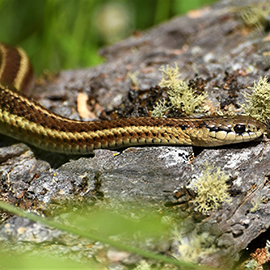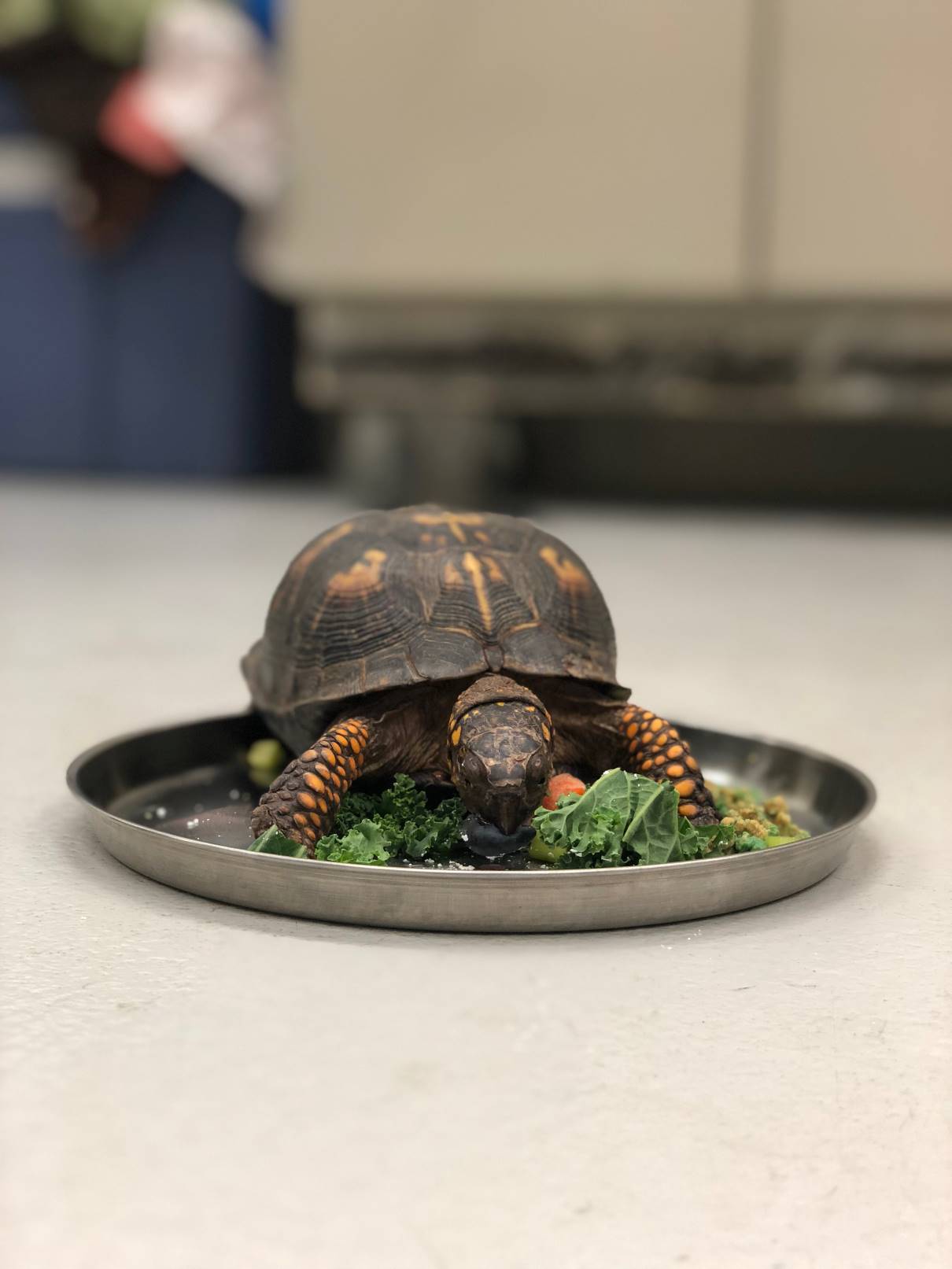BY: Monica Liszka UNIVERSITY OF ILLINOIS COLLEGE OF VETERINARY MEDICINE
 As the weather warms up, you may encounter a surprising native resident of Illinois: snakes! Illinois is home to over 30 species of snakes, most of which are harmless to humans but essential to the health of their natural habitats. Eleven of these species (as of 2015) are endangered or threatened in Illinois due to habitat loss and the illegal pet trade. Often living near meadows and swamps, some snakes can swim or even climb trees!
As the weather warms up, you may encounter a surprising native resident of Illinois: snakes! Illinois is home to over 30 species of snakes, most of which are harmless to humans but essential to the health of their natural habitats. Eleven of these species (as of 2015) are endangered or threatened in Illinois due to habitat loss and the illegal pet trade. Often living near meadows and swamps, some snakes can swim or even climb trees!
Snakes have learned how to live alongside residential areas, but they do their best to remain hidden from people.
Similar to most other reptiles, snakes rely on external heat sources to maintain their body temperature. During the warm summer months, when high temperatures make most of us hide in our houses, snakes may be more active at dawn, dusk, or night, effectively avoiding the hottest daytime temperatures. During the day, they hide under rocks or in other shady areas to help keep cool and hide from larger predators. Throughout the Illinois winter, snakes are largely inactive. Instead, they undergo brumation (the reptile form of hibernation), hiding in rock crevices or underground burrows without eating for weeks to months at a time.
Snakes are all carnivores, but eat much more than just the rodents you might assume! Snakes have been shown to eat a variety of prey, including insects, fish, frogs, and small mammals, like the mice they are so well known for hunting. Snakes do a lot to keep an ecosystem healthy by helping to control the population of these pest species. When snakes native to an area disappear, there is often a dramatic spike in the population of their prey, which can lead to disease spread and habitat declines.
Just like all of us, snakes can get sick and spread disease to other snakes. One disease found in Illinois that is particularly devastating to snakes is called Snake Fungal Disease, caused by the fungus Ophidiomyces ophiodiicola. This fungus causes severe disease and can be deadly to infected snakes. This fungus is not dangerous to humans but is easily transmitted to healthy snakes, making them sick. Relocating a snake to a new habitat is one way people can inadvertently spread this disease to wild populations with potentially disastrous effects. The University of Illinois Wildlife Epidemiology Laboratory is actively investigating Snake Fungal Disease by working to track the fungus in wild populations and identifying appropriate treatment options for infected snakes.
Co-existing with native wildlife is important to maintaining a delicate balance in the environment, and snakes are no exception. Any snakes you spot are happier if you give them their space and don’t try to handle them. If a snake accidentally wanders into your garage or home, it is best to call a wildlife removal specialist to relocate the snake safely and appropriately. If the snake appears injured or ill, please contact the Wildlife Medical Clinic at the University of Illinois or your local licensed wildlife rehabilitator for help.
Additional information:
https://vetmed.illinois.edu/wildlife/2019/01/21/little-garter-snake-with-a-big-problem/
https://www.dnr.illinois.gov/education/pages/wildaboutsnakes.aspx
https://www.dnr.illinois.gov/publications/documents/00000138.pdf
http://www.pbs.org/wnet/nature/the-reptiles-snakes-saving-snakes/2911/



